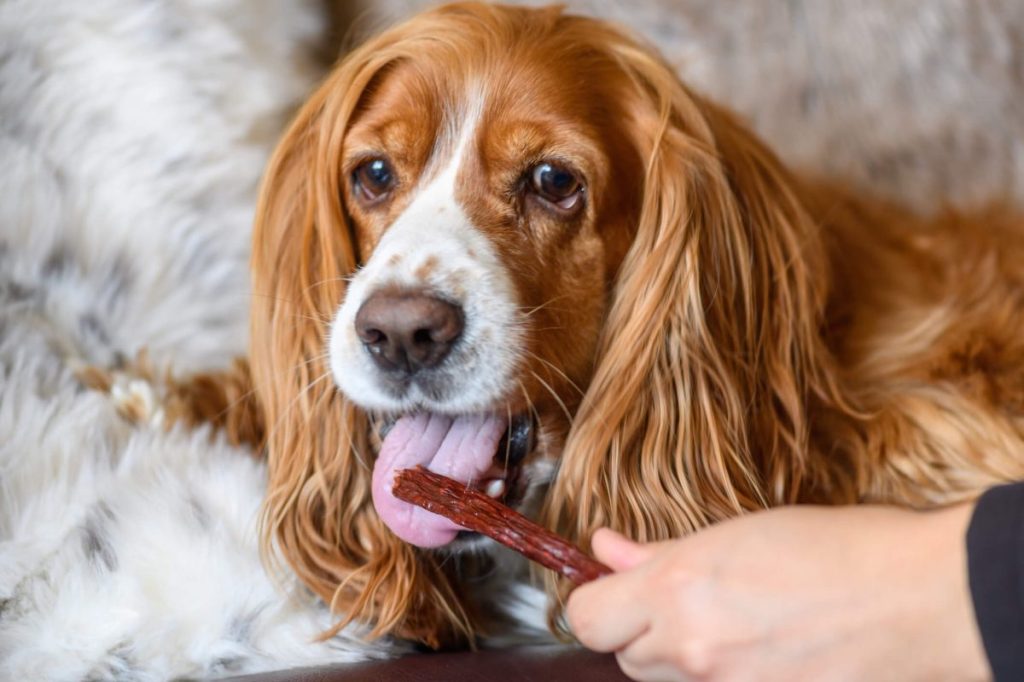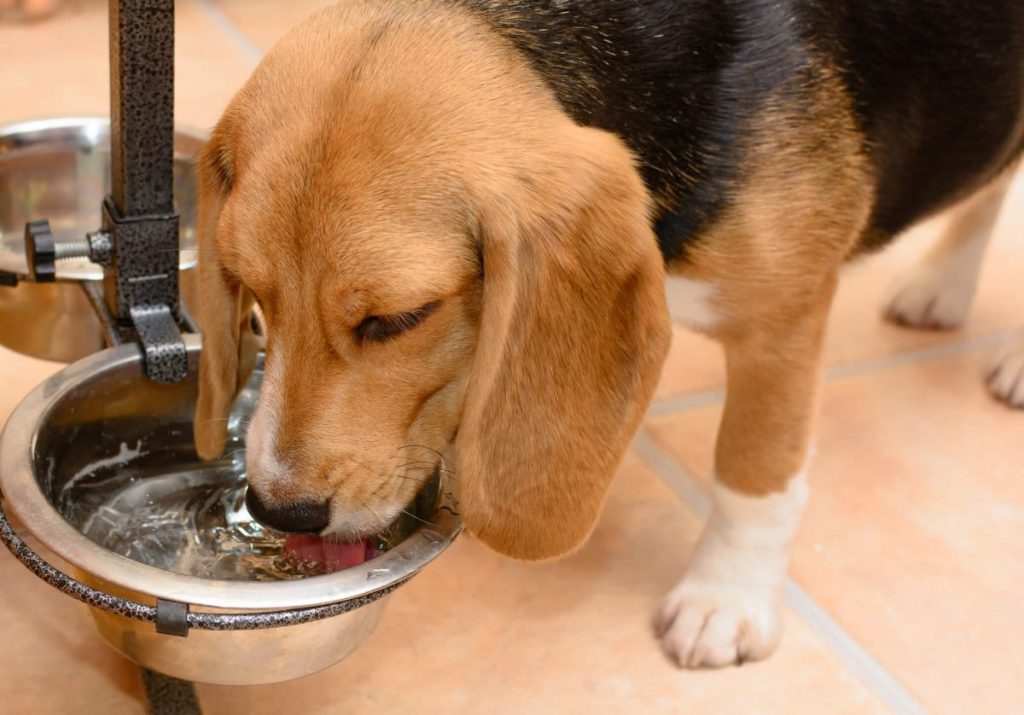We’ve all been there. You’re snuggling with your furry friend, enjoying a moment of affection, when suddenly, you’re hit by a wave of less-than-pleasant doggy breath. It can be enough to make you turn your head away and reconsider that cuddle. While it’s natural for dogs to have some odor in their mouths, there are steps you can take to mitigate this issue and improve your pet’s oral health. Below, we’ll explore everything you need to know about dog breath fresheners, from their types and ingredients to their effectiveness and safety.
Why your dog has bad breath
First and foremost, it’s important to understand why dogs develop bad breath, or medically, halitosis. The primary culprit is usually bacteria. When food particles and saliva mix, they can form plaque on your dog’s teeth, which, if not removed, hardens into tartar. This process creates a breeding ground for bacteria, leading to bad breath.
Another possible cause for your dog’s bad breath might be linked to their diet. Certain foods — especially those with strong odors or high-fat content — can contribute to unpleasant breath. Moreover, dogs are known to scavenge and may eat things they shouldn’t, like garbage or animal feces, which can also result in foul breath. Beyond diet and hygiene, bad breath may occasionally be a sign of more serious health issues that require attention.
What is a dog breath freshener?
A dog breath freshener is a product specifically designed to improve the smell of your pup’s breath. These fresheners come in various forms and usually contain natural ingredients like mint, parsley, or enzymes. They work by targeting the bacteria in your dog’s mouth that cause bad breath, helping to neutralize odors and promote overall oral health. Regular use of dog breath fresheners can also make cuddling and close interactions with your pet more enjoyable.
Types of dog breath fresheners

There are several types of dog breath fresheners available on the market, each with its unique method for tackling bad breath. Here’s a detailed look at the options to help you make an informed decision about what will work best for your dog.
Dental chews
Dental chews are probably the most popular type of breath fresheners because they serve a dual purpose: cleaning teeth while keeping your dog entertained. These chews are designed to reduce plaque and tartar buildup through the mechanical action of chewing. Many brands also include breath-freshening ingredients like mint or parsley. Always ensure that the chews are appropriate for your dog’s size and chewing strength to avoid any choking hazards.
Breath freshening sprays
Sprays are a convenient option for freshening your dog’s breath instantly. These sprays are usually made with natural ingredients such as aloe vera, peppermint, and parsley, and they work by neutralizing bad odors. To use, simply spray the solution directly into your dog’s mouth. Some dogs might not enjoy the sensation of being sprayed, so this option might not be suitable for all.
Water additives
Water additives are perhaps the easiest to use. You simply add a measured amount to your dog’s water bowl. They’re especially useful if your dog isn’t fond of sprays or chews. Since most water additives are tasteless and odorless, they can be an easy addition to your pet’s daily routine. However, be sure to follow the dosage instructions on the label to ensure effectiveness.
Dental wipes
If your dog is not a fan of toothbrushing, dental wipes can be a great alternative. These wipes are infused with cleaning agents and are supposed to be rubbed directly on your dog’s teeth and gums. Although they may not be as effective as regular brushing, dental wipes can help reduce plaque and freshen breath, especially when used regularly.
Dog breath mints and treats
Specially formulated breath mints and treats are another popular option. These come in a variety of flavors and are often packed with natural breath-freshening ingredients. They are a quick and tasty way to improve your dog’s breath, though they are best used in conjunction with other dental care methods for optimal results.
Dog toothpastes and toothbrushes
Of course, traditional brushing remains one of the most effective ways to maintain oral hygiene and fresh breath. Dog-specific toothpaste is safe for canines and comes in flavors that appeal to them, like chicken or peanut butter. Furthermore, dog toothbrushes are designed to reach all areas of a canine’s mouth. As such, consistent use of these products can yield excellent results over time, reducing plaque, tartar, and bad breath.
Natural dog breath fresheners
For those who prefer a more natural approach, there are several home remedies that can help freshen your dog’s breath. Ingredients like parsley, coconut oil, and apple cider vinegar can be added to your dog’s diet or water bowl to help neutralize odors and improve dental health. However, it’s essential to consult your veterinarian before trying any home remedies to ensure they are safe and appropriate for your pet.
What to look for in a dog breath freshener?

As previously discussed, choosing the best dog breath freshener for your furry friend can make a world of difference, not only for your pet’s dental wellness but also for the general harmony of your household. However, with so many types and brands, how do you know which one is right for your dog? Here are some key factors to consider:
Check for natural ingredients
The first thing you should check is the ingredient list. Aim for natural ingredients and avoid products containing alcohol, xylitol, and other substances toxic to dogs. Ingredients like parsley, mint, and chlorophyll are excellent natural breath fresheners and are safe for dogs. Keep in mind that even if a product is marketed as safe, a quick check can prevent potential health risks.
Evaluate effectiveness
Not all breath fresheners are created equal. Some may mask the odor temporarily without addressing the underlying causes, such as plaque and tartar. Look for products that offer prolonged breath freshness. This can save you time and effort, reducing the need for frequent applications.
Consider the form
Since dog breath fresheners come in various forms, consider what form will be easiest for you to administer and most acceptable to your dog. For instance, if your pup enjoys chewing, dental chews might be the best option. Alternatively, if your dog is picky or uncooperative, a water additive might be a simpler solution.
Look for added dental benefits
Beyond freshening breath, a good dog breath freshener should also contribute to your dog’s overall dental health. Seek products that help reduce plaque and tartar buildup, promote gum health, and contain enzymes that fight harmful bacteria in the mouth. These additional benefits can lead to a healthier mouth and fresher breath over the long term.
Ensure it’s vet-approved
It’s always a good idea to choose products that have been approved by veterinarians. Look for a seal of approval from reputable veterinary organizations, such as the Veterinary Oral Health Council (VOHC). This indicates that the product has been tested for safety and effectiveness.
Assess taste and palatability
Your dog is more likely to accept and benefit from a breath freshener that tastes and smells appealing. Check for products that are palatable to dogs, as an unappealing flavor or scent can make it difficult to administer regularly.
Compare cost and value
While you shouldn’t skimp on quality, it’s important to find a product that fits within your budget. Compare different brands and types of breath fresheners to find one that offers good value for money without compromising on effectiveness.
Read reviews and get recommendations
Before making a final decision, read reviews from other dog parents to see what they have to say about the product’s effectiveness and ease of use. Additionally, consult your veterinarian for recommendations based on your dog’s specific needs and health conditions.
How to incorporate breath fresheners into your dog’s routine?

Even the best breath freshener won’t do much good if your dog refuses to use it. To seamlessly incorporate these products into your pet’s routine, try these tips:
- Start gradually: Dogs can be sensitive to new tastes and routines. To ensure your dog accepts the new breath freshener, introduce it gradually. Start with small amounts and slowly increase the dosage as per the product’s instructions. This gradual approach helps your dog get accustomed to the new addition without any resistance.
- Integrate with existing routine: For seamless integration, align the breath freshener with your dog’s existing routine. For example, if you choose treats or chews, give them after meals or during playtime. Water additives can be mixed with their regular water bowl, while sprays can be applied after brushing their teeth.
- Maintain regular brushing: Remember, breath fresheners should complement — not replace — regular dental hygiene practices. Continue to brush your dog’s teeth regularly and schedule professional cleanings as recommended by your veterinarian.
- Reward your pup: Use positive reinforcement to make the introduction of breath fresheners a positive experience. Reward your dog with a favorite treat or extra playtime when they accept the freshener without fuss. This encourages cooperation and makes the process smoother.
- Monitor for reactions: As with any new product, keep an eye on how your dog responds. Watch for any signs of allergies or digestive issues, such as vomiting or diarrhea. If you notice any adverse reactions, discontinue use and consult your veterinarian immediately.
When bad breath signals a bigger problem
While using breath fresheners can greatly enhance your dog’s oral health, persistent bad breath may indicate a more serious underlying condition. Issues like periodontal disease, gastrointestinal problems, or even systemic illnesses could be the cause. If you’ve tried various methods to improve your dog’s breath and nothing seems to work, it’s crucial to seek veterinary advice. Don’t forget, early detection and treatment can prevent minor issues from developing into major health problems.









